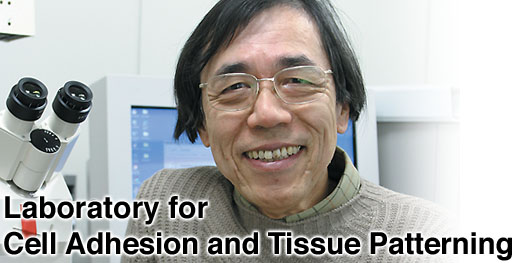





      |

The general research focus of our lab is the study of the cellular and molecular basis of the mechanisms by which animal cells are organized into precisely ordered multicellular structures, such as tissues and neural networks. We are particularly interested in the roles played by cell-cell adhesion and recognition molecules in these processes. The cadherin family of adhesion molecules and associated signaling systems are thought to be essential for the construction of tissues; this adhesion machinery is the main subject of our research.
Cell-cell adhesion is dynamic and reversible, which is important for regulating many types of morphogenetic cell behavior. Cadherin activity is modulated by interactions with cytoskeletal or signaling factors mediated by members of the catenin family of cadherin-associated proteins. We are studying the mechanisms underlying the crosstalk between cadherins and cytoskeletal or signaling systems, with the goal of uncovering novel regulatory mechanisms specific to cell-cell adhesion.
We are also interested in the mechanisms underlying the formation of neural networks, particularly interneuronal recognition during synapse formation. The cadherin/catenin complex is localized in synaptic contacts, and different cadherin subtypes are expressed by different neurons of the brain. We are now investigating ways to determine how synaptic contacts are regulated by this adhesion system, how this process is involved in the physiological regulation of synaptic activities, and the role of neuron type-specific expression of cadherin subtypes in neural network development. We are also interested in the roles of other cell surface molecules, such as OL-protocadherin and nectins, in interneuronal recognition processes.
A third area of interest to our lab is the mechanisms by which animal tissues are organized through the processes of dynamic cell rearrangement, such as cell migration and relocation. Using the neural retina and brain cortices as model systems, our team is attempting to determine how cell migration and positioning are controlled by cell adhesion and signalling molecules during the formation of laminar structures in these tissues.